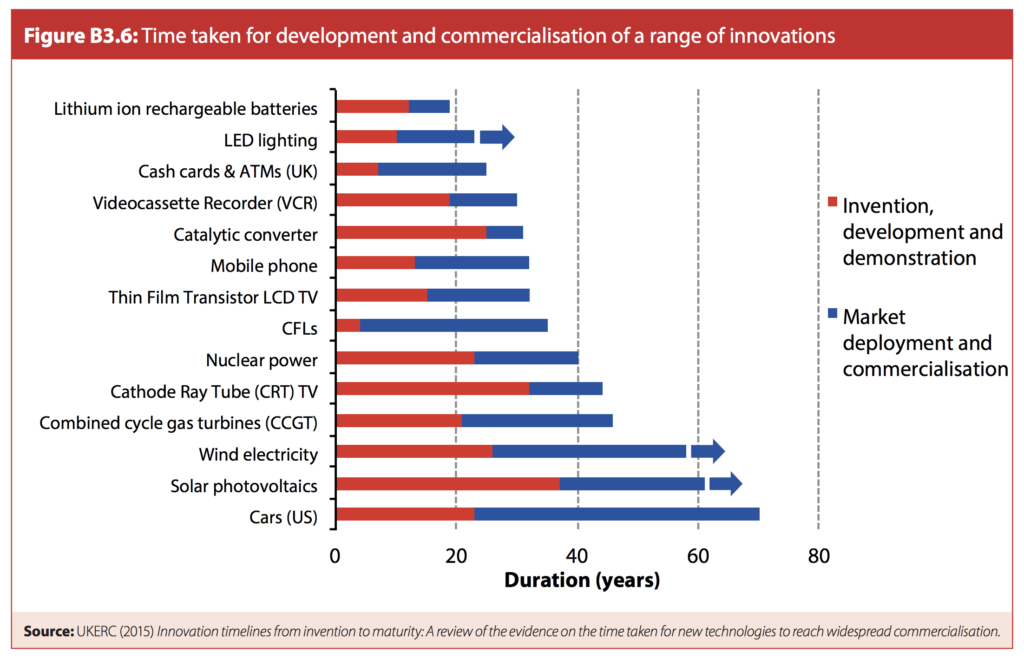
Guest post: Dieter Helm’s review is not as radical as it might first appear

Matthew Bell
10.27.17
Matthew Bell
27.10.2017 | 1:40pmMatthew Bell is a director at Frontier Economics. From 2014 to 2017, he was the chief executive of the UK’s Committee on Climate Change.
Dieter Helm’s “cost of energy” review was always going to be clear in setting out the views of its author. However, he is surprisingly pragmatic on many points.
His introductory statement asserts that “energy policy is not about facts: it is about setting objectives and designing regulation and markets to achieve them”. The focus on objectives is one of the outstanding successes of this review.
Throughout, Helm is clear about the need to meet the objectives enshrined in the Climate Change Act and to ensure a secure supply of energy. Whatever else you hear in the debate about the review, there is no doubt that Helm is committed to both.
The review then centres on a diagnosis of how we have got to where we are and on how we could do things better – and at lower cost – in the future. That is also welcome. Nobody doubts there is room for improvement.
A lot of what he discusses is about quite technical issues relating to how electricity markets work (or don’t work). I will leave that debate to the specialists. I want to focus here on the way in which the review addresses the objectives set out in the Climate Change Act: achieving a reduction, from 1990 levels, of at least 80% in greenhouse gas emissions by 2050.
Helm gets three important things right in his high-level assessment of the “2050 challenge”.
First, he is right to emphasise that there are many ways to reach that 2050 goal, while also ensuring security of energy supply. There are alternative paths (going faster or more slowly at different times), alternative technologies that could be used and alternative policy instruments that can help. He is particularly right in saying that a uniform price of carbon, set at the right level, across the entire economy is, theoretically, the best solution.
Second, Helm is right to highlight how quickly technology is changing and how different the world may be in 2050 compared to today. The “legacy costs” reflect, in part, how quickly technological change has overtaken earlier policy decisions. There is now a broad consensus that rapid change will continue with unpredictable outcomes for how we will produce and consume energy in the future.
Finally, he is certainly right to emphasise, repeatedly, the need for sectors outside the power sector to do more in order to meet carbon budgets at least cost. He draws particular attention to agriculture, but also emphasises transport in various places.
Helm is correct in those major arguments (and in many other less prominent issues across more than 200 pages of dense text). When he delves into the detail about what to do he is more pragmatic. Let’s take each of those three areas again.
First, while a carbon price is undoubtedly a “first-best” solution, he understands that it cannot be the full solution: “A carbon price is necessary, but not sufficient to meet the carbon objectives.” (pg 190).
Simplify the current system of regulations and incentives? Undoubtedly. Rely solely on carbon prices (and border tariff adjustments)? Not even Helm suggests that.
It is worth an example to illustrate the difficulties. Adding a price of carbon to customers using gas central heating is one of the most widely quoted examples for improving the efficiency with which the energy sector could reduce its emissions. This is because gas used for heating currently faces no carbon price, whereas electricity does.
The Committee on Climate Change (CCC), and many others, have said this might lead to more efficient decarbonisation (as the Helm review would like), but it has proved politically unpalatable (see page 74 onwards; pdf).
So let’s look at the second issue: how quickly technology is changing. Helm appears to assume that we would have achieved the progress witnessed to-date in technology (e.g. falling offshore wind costs) and carbon reduction (e.g. meeting carbon budgets) absent of any government intervention beyond a carbon tax with tariff-border adjustments.
But dig a little deeper. He highlights two areas (beyond R&D, innovation and network costs) where action beyond a carbon price may have been (or may still be) required: offshore wind and carbon capture and storage (page 67, para 33). These are the only two particular technologies where the CCC has ever really endorsed specific action.
What about the final major point? Namely, that other sectors could contribute much more.
Helm asserts that carbon reductions will be much more easily forthcoming (i.e. at much lower cost) in other sectors – particularly agriculture – compared to the power sector. Evidence to-date suggests that even “win-win” policies (i.e. where carbon is reduced and costs to farmers also fall) are not being adopted in agriculture. It is not a question of a carbon price, other factors are at work.
The 2017 CCC Progress Report to Parliament (pdf) pointed out that emissions from agriculture have not changed over the past six years despite many options available that would save farmers money and reduce carbon emissions. It is not clear that the “failure” in this area is a lack of carbon price, however welcome such a move would be.
The Helm report appears to contain trenchant criticism of carbon policies followed by successive governments. Many others, including the CCC, have also been critical over the years. That has included calling loudly for more action in sectors other than power. In many areas the difference seems to be more in the presentation of that criticism rather than the action the review suggests.
The one truly significant change is only hinted at in a few places: Helm suggests less of a “linear” progression to 2050 compared to the least-cost path often illustrated by the CCC.
First, that falls into the same trap Helm faults in others: the “linear” rate of (aggregate) progress is the outcome of the rate of technological progress and behavioural change, not something to be fixed from on high.
Second, the CCC’s path only appears linear in aggregate: when looked at sector-by-sector it is distinctly non-linear. Some sectors go faster, others more slowly, reflecting precisely the types of issues – rates of technological progress, relative costs of decarbonisation and behaviour change – that Helm emphasises.
Overall, I doubt the review’s proposed adjustments to markets and regulation would result in a significantly different annual rate of decarbonisation to 2050; but it is also worth a word of warning. Technological change is undoubtedly fast and may be speeding up, but lessons of technological change to-date suggest it takes 20-40 years (and often longer) for technologies to reach mass deployment.
Many technologies, including photovoltaic solar panels, have taken longer. The figure below comes from work commissioned by the CCC (page 63; pdf) and illustrates the time it has taken from inception to mass deployment for new technologies.

In January, we will be only 32 years away from 2050. Even if technological change speeds up, it is very hard to imagine that the three things Helm identifies (digitalisation, renewable generation, batteries & storage) will so fundamentally alter the landscape in that period as to require a major change in our decarbonisation trajectory. It is even harder to imagine that something neither he nor others have seen will to do so. Steady progress is still sensible.
The views expressed in the Helm review are strong and clear – in many areas welcome and correct. However, when examined closely they may not require, or indeed result in, the dramatic shifts that the review claims flow from those views.
There is not the space here to discuss the more detailed recommendations for power markets, but the same might be true of them. What is clear (and here I admit a bias as its former chief executive), the CCC’s role as independent arbiter in much of this debate emerges very well from the review.
While Helm takes the occasional pot-shot at some of its analysis (without offering any detailed analysis of his own), it is notable that much of the evidence he uses comes from the CCC, or work commissioned by the CCC. That reinforces the view that it is one of the few bodies producing trusted analysis in this area.
More importantly, many of his recommendations are ones the CCC would likely support: particularly, his central recommendation for a more uniform carbon price set at the right level across all sectors supported by fewer, simpler government actions where that price alone is insufficient to meet the objectives of the Climate Change Act.
Published one week before Hallowe’en, the Helm review has the air of a ghost story: the screams are scary, but much of it would pass through existing policy and policy recommendations that have already been made without disturbing them.
-
Guest post: Dieter Helm’s review is not as radical as it might first appear

